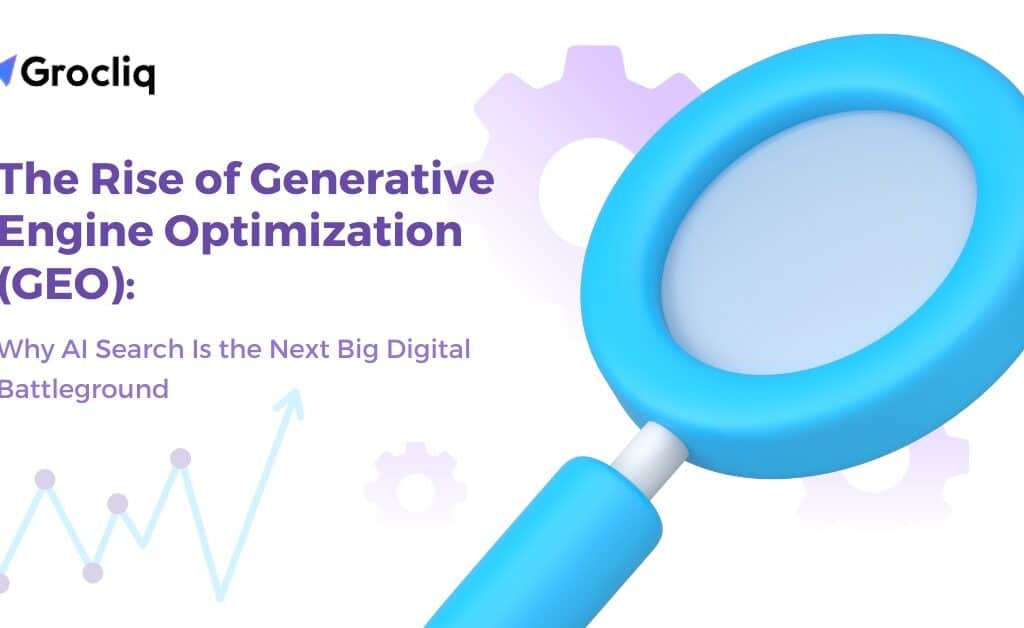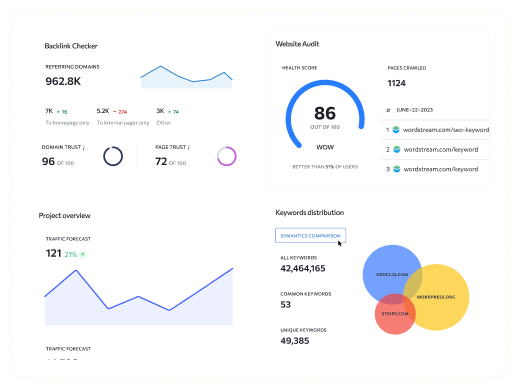In today’s digital era, B2B ecommerce is transforming the way businesses operate, offering substantial growth opportunities and streamlined processes. But what exactly is B2B ecommerce, and why is it crucial for modern businesses?
B2B ecommerce, or business-to-business ecommerce, involves online transactions between businesses. Unlike B2C ecommerce, which targets individual consumers, B2B ecommerce solutions cater to the needs of other businesses. This guide delves into the intricacies of B2B ecommerce, from its definition and types to the latest trends and benefits, helping you understand its significance and how to leverage it for your business’s success.
By the end of this article, you’ll have a comprehensive understanding of B2B ecommerce and how it can revolutionize your business operations, improve customer satisfaction, and drive growth.
What is B2B Ecommerce?
B2B ecommerce refers to online transactions where both parties involved are businesses. This can include transactions between manufacturers and wholesalers, wholesalers and retailers, or between any other types of business entities. Unlike B2C ecommerce, B2B ecommerce often involves larger order volumes, longer sales cycles, and more complex processes. The global business-to-business ecommerce market is significantly larger than the B2C market, driven by the demand for efficiency, convenience, and streamlined purchasing experiences.
Key Statistics
- The B2B ecommerce market is valued at over six times that of the B2C market.
- By 2025, 80% of B2B sales interactions between suppliers and buyers will occur in digital channels.
Types of B2B Ecommerce
B2B2C (Business-to-Business-to-Consumer):
- Definition: B2B2C involves a business selling products to another business, which then sells those products directly to the consumer. This model removes the middleman, allowing businesses to directly reach consumers.
- Example: A manufacturer selling directly to consumers through a partner B2B business.
- Benefits: Direct consumer reach, streamlined supply chain, enhanced customer experience.
Wholesale:
- Definition: Wholesale involves businesses buying goods in bulk at a lower price and then selling them at retail value. This model is common in industries like retail, food service, and construction.
- Example: A food distributor purchasing bulk goods from a manufacturer and selling them to restaurants.
- Benefits: Bulk pricing advantages, long-term business relationships, stable demand.
Manufacturers:
- Definition: Manufacturers produce finished goods and sell them to other manufacturers, suppliers, or wholesalers.
- Example: Auto industry parts manufacturers selling to automotive companies.
- Benefits: Large-scale production efficiency, specialized markets, high-volume sales.
Distributors:
- Definition: Distributors partner with manufacturers to sell products, managing orders and logistics.
- Example: A distributor handling product sales and delivery for a manufacturer.
- Benefits: Expanded market reach, logistical support, inventory management.
Trends in B2B Ecommerce
Personalization:
- Definition: Tailoring the buying experience to individual customer preferences.
- Impact: 72% of customers engage only with personalized messaging, and 69% of B2B buyers will pay more for a personalized experience.
- Examples: Customized product recommendations, personalized pricing, and targeted promotions.
Omnichannel Experience:
- Definition: Providing a seamless experience across all channels, including mobile, web, and in-person.
- Impact: 77% of consumers use mobile devices to compare prices in stores.
- Examples: Unified shopping carts, consistent branding, integrated customer service.
Progressive Web Apps (PWAs):
- Definition: Web applications that load like regular websites but offer advanced functionality similar to mobile apps.
- Impact: Increased accessibility and convenience, driving higher engagement and sales.
- Examples: Faster loading times, offline access, push notifications.
Conversational Commerce:
- Definition: Using voice-activated devices and chatbots to facilitate transactions and customer service.
- Impact: Growing adoption of voice search and ordering, improving customer interaction.
- Examples: Voice search optimization, AI-driven chatbots, automated reordering.
VR and AR:
- Definition: Virtual reality (VR) and augmented reality (AR) technologies that provide immersive experiences.
- Impact: Enhanced product visualization, better customer engagement.
- Examples: Virtual product demos, AR product placement, interactive 3D models.
AI and IoT:
- Definition: Artificial intelligence (AI) and the Internet of Things (IoT) technologies that enhance data analysis and automation.
- Impact: Improved predictions, recommendations, and operational efficiency.
- Examples: Predictive maintenance, smart inventory management, AI-driven customer insights.
Mobile Growth:
- Definition: Increasing use of mobile devices for business transactions.
- Impact: Mobile web traffic doubling every five years, driven by mobile-dependent millennials in managerial positions.
- Examples: Mobile-friendly websites, mobile apps, responsive design.
Data Analytics:
- Definition: Using data to drive decision-making and optimize customer experiences.
- Impact: Enhanced marketing strategies, improved customer insights.
- Examples: Real-time analytics, customer segmentation, data-driven personalization.
Benefits of B2B Ecommerce
Lower Costs:
- Definition: Reducing overhead and operational costs through automation and efficiency.
- Examples: Lower marketing costs, reduced transaction costs, streamlined supply chain management.
Improved Operations and Internal Processes:
- Definition: Streamlining business processes such as pricing, ordering, and inventory management.
- Examples: Automated order processing, real-time inventory tracking, integrated systems.
Increased Efficiency Through Automation:
- Definition: Minimizing manual data entry and reducing errors.
- Examples: Automated invoicing, electronic data interchange (EDI), workflow automation.
Enhanced Customer Experiences:
- Definition: Offering personalized portals, self-service options, and faster order processing.
- Examples: Customer-specific catalogs, personalized dashboards, quick reordering options.
Greater Market Reach and Expansion:
- Definition: Opening new markets and customer segments through digital channels.
- Examples: Global ecommerce platforms, multilingual websites, localized marketing.
Better Data Management and Analytics:
- Definition: Providing insights into customer behavior and business performance.
- Examples: Advanced analytics tools, customer relationship management (CRM) integration, predictive analytics.
Stages of B2B Business Development
New/Startup:
- Definition: The initial phase of a business, focusing on product development and initial marketing strategies.
- Challenges: Establishing a market presence, managing cash reserves.
- Strategies: Market research, targeted marketing, securing initial sales.
Growth:
- Definition: The phase where the business begins to increase sales and revenue, expanding its customer base.
- Challenges: Handling more customers, managing increased revenue.
- Strategies: Scaling operations, optimizing processes, expanding marketing efforts.
Expansion:
- Definition: Entering new markets, introducing new product lines, and increasing market share.
- Challenges: Increased competition, maintaining business growth.
- Strategies: Diversification, strategic partnerships, market penetration.
Maturity:
- Definition: Dominating the market and exploring new opportunities for sustained growth.
- Challenges: Market saturation, exploring new markets and products.
- Strategies: Innovation, exploring new market segments, continuous improvement.
B2B Ecommerce Marketing Strategies
Content Marketing:
- Definition: Creating valuable content to attract and engage customers.
- Examples: Blog posts, whitepapers, case studies, infographics.
SEO Optimization:
- Definition: Improving website visibility on search engines with targeted keywords.
- Examples: On-page SEO, backlinking, keyword research, meta tags.
Social Media Marketing:
- Definition: Using social platforms to promote products and interact with customers.
- Examples: LinkedIn campaigns, Facebook ads, Twitter engagement, Instagram posts.
Email Marketing:
- Definition: Sending personalized emails to nurture leads and build customer relationships.
- Examples: Newsletters, promotional emails, follow-up emails, drip campaigns.
Paid Advertising:
- Definition: Investing in ads to reach a larger audience and drive traffic to your site.
- Examples: Google Ads, display ads, social media ads, PPC campaigns.
Customer Reviews and Testimonials:
- Definition: Leveraging positive feedback to build trust and credibility.
- Examples: Review sections, testimonial videos, case studies, star ratings.
Implementing a B2B Ecommerce Platform
Key Features to Look For:
- Integration with ERP, CRM, and other systems: Ensure seamless data flow between different business systems.
- Customization options: Tailor the platform to meet unique business needs.
- Scalability: Ability to grow with your business, accommodating increased traffic and transactions.
Case Studies:
- Berlin Packaging: Achieved a 27% increase in conversions by switching to a more flexible B2B ecommerce platform.
- United Aqua Group: Saw a 284% increase in customers and a 539% increase in conversion rate after implementing a new platform.
- Tradelink: Experienced a 346% increase in customers and a 338% increase in revenue after modernizing their ecommerce system.
Common Misconceptions About B2B Ecommerce
B2B Customers Don’t Want to Order Online:
- Reality: Millennials prefer digital interactions; 75% of B2B buyers prefer digital over in-person.
Ecommerce Requires Price Transparency:
- Reality: Prices can be personalized and visible only to logged-in customers, protecting margins.
Online Ordering is Cold and Impersonal:
- Reality: Modern ecommerce platforms offer personalized and interactive experiences, enhancing customer relationships.
Custom Ordering is Not Possible Online:
- Reality: Custom quoting tools and segmented customer groups enable tailored orders and repeat business.
High-Ticket Purchases Won’t Happen Online:
- Reality: Increasing numbers of B2B buyers are comfortable making large transactions online, with some spending over $500,000 in a single transaction.
Conclusion
B2B ecommerce is a powerful tool that can transform business operations, improve customer experiences, and drive growth. By understanding its various aspects and leveraging the right strategies and platforms, businesses can stay competitive in an increasingly digital world. Start exploring B2B ecommerce solutions today to prepare for the future of business-to-business ecommerce.
Note: Read Our Latest Marketing and SEO Blogs:
What is b2c seo | Ai seo content generator | Ai is Transforming E Commerce | Ai Semantic SEO | AI for SEO Optimization | AI SEO Prompts | Structured Content AI.
Frequently Asked Questions
Q1. What is the difference between B2B and B2C ecommerce?
A1: B2B targets businesses as customers, while B2C targets individual consumers.
Q2. How can B2B ecommerce benefit my business?
A2: Lower costs, improved efficiency, enhanced customer experience, and expanded market reach.
Q3. What are the latest trends in B2B ecommerce?
A3: Personalization, omnichannel experience, PWAs, conversational commerce, VR and AR, AI and IoT, mobile growth, and data analytics.
Q4. How do I choose the right B2B ecommerce platform?
A4: Look for features like integration with existing systems, customization, and scalability.
Q5. Can B2B ecommerce support custom orders?
A5: Yes, modern platforms offer custom quoting tools and segmented customer groups for tailored orders.





